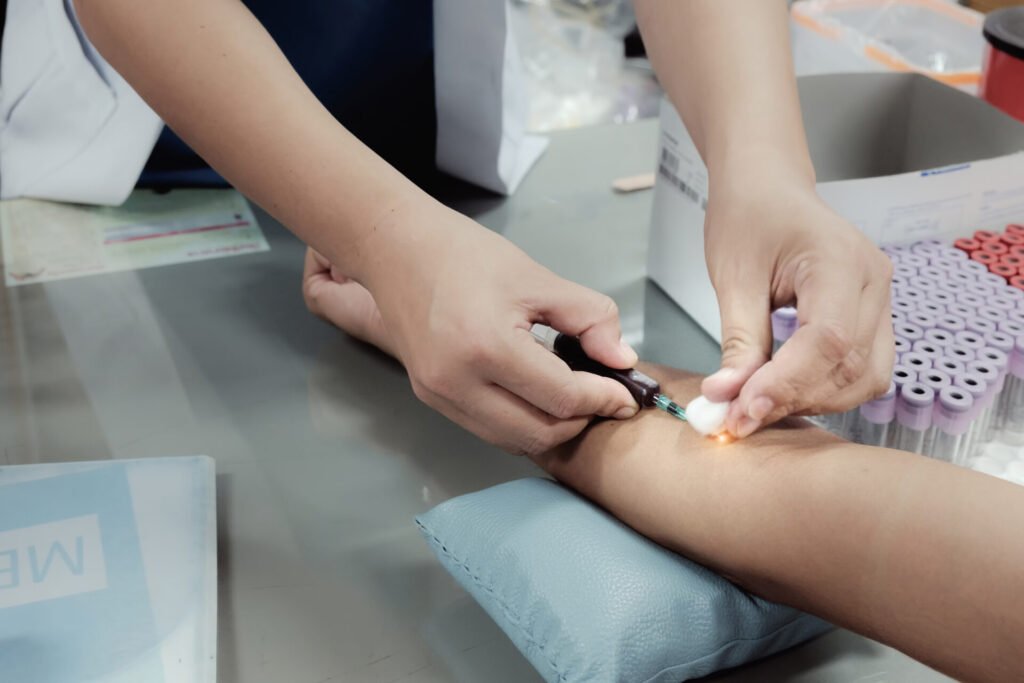
Phlebotomy—the process of drawing blood for medical testing, transfusion, or donation—is a routine yet critical procedure in healthcare. To ensure safety, accuracy, and patient comfort, following proper phlebotomy guidelines is essential. Whether you’re a healthcare provider or a patient curious about the process, this blog will walk you through the essential best practices and standards followed in modern phlebotomy.
Why Are Phlebotomy Guidelines Important?
Adhering to established guidelines ensures:
Accurate test results
Minimized risk of infection
Reduced discomfort for patients
Safe handling and transportation of blood samples
Compliance with healthcare standards and regulations
Patient Identification & Preparation
Proper patient identification is the first and most crucial step.
- Always confirm two identifiers – typically the patient’s full name and date of birth.
- Review any relevant medical history or special instructions, such as fasting requirements.
- Explain the procedure to help ease patient anxiety.
Tip: Ask if the patient has had issues with blood draws before, such as fainting or difficulty finding veins.
Hand Hygiene and PPE (Personal Protective Equipment)
Maintaining hygiene prevents cross-contamination and protects both the patient and the phlebotomist.
- Wash hands thoroughly before and after the procedure.
- Wear gloves, and if needed, a mask and face shield.
- Dispose of PPE properly after use.
Equipment Preparation
Before drawing blood, ensure all necessary supplies are ready:
Sterile needles and syringes or vacutainer systems
Tourniquet
Alcohol swabs or antiseptic
Collection tubes labeled in advance
Cotton or gauze pads
Adhesive bandages
Sharps container for disposal
Always check the expiry date on tubes and needles before use.
Site Selection and Vein Location
The most common site for venipuncture is the median cubital vein in the arm.
- Use a tourniquet to make veins more visible.
- Avoid drawing from areas with scarring, edema, or infection.
- Never perform phlebotomy on the same arm used for IV infusions, if avoidable.
Skin Disinfection and Blood Collection
Proper disinfection prevents infections and sample contamination.
- Clean the selected site using circular motions with alcohol or an antiseptic wipe.
- Allow the area to air dry completely before inserting the needle.
- Insert the needle at the correct angle (15–30 degrees) and collect blood smoothly.
Use a gentle but firm technique to minimize pain and bruising.
Post-Procedure Care
After collecting the required amount of blood:
- Remove the tourniquet first, then withdraw the needle.
- Apply pressure with a cotton pad or gauze.
- Secure with an adhesive bandage.
- Instruct the patient to keep the area clean and avoid heavy lifting for a few hours.
Sample Labeling and Transportation
Immediately label the tubes with the patient’s details to avoid misidentification.
- Include name, date of birth, date/time of collection, and test required.
- Store and transport samples at the recommended temperature and timing.
- Use biohazard bags for safe sample transport.
Documentation and Record Keeping
Accurate documentation is essential for traceability and compliance.
- Record the time, site of collection, and any observations (e.g. difficulty drawing, patient reaction).
- Note the name of the phlebotomist for accountability.
Handling Complications
Common issues include:
Hematoma: Apply pressure and ice if needed.
Fainting: Lay the patient flat and monitor.
Difficulty finding veins: Try the other arm or consult with a colleague.
Always follow up with appropriate care and reporting.
Why Phlebotomy Guidelines Matter
Whether performed in a clinic, hospital, or at home, phlebotomy must be handled with care and professionalism. At London Phlebotomy, our certified phlebotomists strictly follow all industry-standard phlebotomy guidelines to ensure safe, hygienic, and comfortable blood collection for every patient.
Need a Home Blood Test?
Book a home visit today with London Phlebotomy for expert care delivered to your doorstep.
📅 Schedule Your Appointment
📞 Contact Us for More Information
